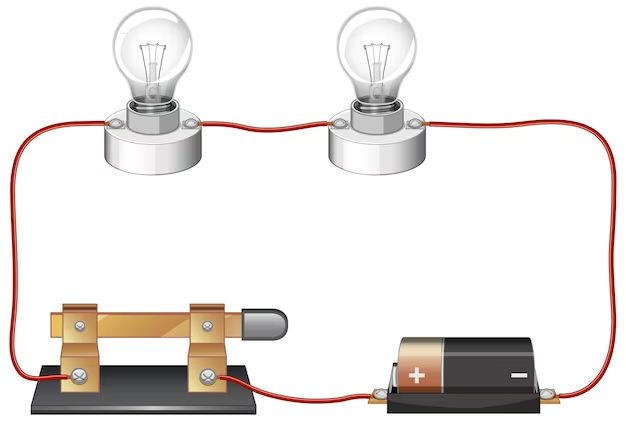A short circuit is an abnormal connection between two nodes of an electric circuit intended to be at different voltages. This results in an excessive electric current limited only by the Thevenin equivalent resistance of the rest of the network and potentially causes circuit damage, overheating, fire or explosion. Although short circuits are most commonly caused by a mechanical fault in the wiring, they can also occur if the insulation between wires fails or when exposed wires make contact with each other. Let’s explore what causes short circuits and how they can be fixed.
Page Contents
What causes a short circuit?
There are a few common causes of short circuits:
- Damaged or faulty wiring – Exposed wires touching each other, cracked wire insulation, loose connections, crimped or pinched wires can all lead to short circuits.
- Overloaded circuits – Too many devices drawing power on one circuit can cause wires to overheat and insulation to melt.
- Damaged devices and appliances – Appliances with frayed power cords, cracked plugs or broken internal wiring can short when plugged in.
- Moisture – Water getting into light fixtures, appliances or junction boxes can cause corrosion that leads to shorting.
- Rodents – Mice or rats chewing on wiring insulation can expose wires to each other.
- Metal objects – Coins, paperclips or screws falling into devices can bridge connections.
Short circuits are dangerous because they can generate extreme heat very quickly, potentially melting insulation, damaging equipment, igniting combustible materials and causing fires. The excessive current flow can also trip breakers or blow fuses which interrupt power service.
Signs of a short circuit
Here are some typical signs that may indicate a short circuit:
- Frequent tripping of a circuit breaker or blowing of a fuse when a circuit is energized.
- Flickering or dimming lights.
- Burning odor coming from an outlet, switch or appliance.
- Sparks or arcing from an outlet.
- Warm outlet cover plates.
- Tingling sensation from touching an appliance.
- Discolored or melted wires, outlets or plugs.
If any of these signs are noticed, the affected circuit should be shut off at the breaker panel and inspected by an electrician to identify and fix the short circuit.
How to fix a short circuit
Here are the basic steps to fix a short circuit:
- Turn off power to the circuit at the breaker panel – This is crucial to avoid getting shocked when working on the wiring.
- Inspect the circuit wiring – Visually check the entire length of wiring for damage. Look for exposed copper, damaged insulation, loose connections, signs of overheating.
- Test wires with a multimeter – Use the continuity or resistance setting to identify any abnormal connections.
- Isolate the location of the short – Narrow down where the shorted wires are making contact based on your inspections and tests.
- Separate shorted wires and repair damage – Carefully separate wires that are contacting each other and re-insulate any exposed copper conductor. Replace wires or devices that are damaged or melted.
- Reconnect devices and appliances – Securely re-attach any wires, outlets, switches that were disconnected during diagnosis.
- Restore power and verify fix – Turn the breaker back on. Test appliances on the circuit and check for normal operation.
In some cases, you may need to pull new wires to completely correct the faulty condition. If the exact cause cannot be found, the entire circuit may need replacement.
Safety tips
Observe these precautions when dealing with short circuits:
- Turn off the power first before inspecting or handling electrical wiring.
- Wear insulated gloves and use insulated tools when working with wiring.
- Never touch exposed conductors or bare copper wires.
- Replace defective breakers or fuses with new ones of the identical size and rating.
- Install GFCIs to help protect against electrical shocks.
- Keep flammable materials away from electrical equipment that could spark or overheat.
- Call a licensed electrician for complex electrical issues.
Preventing short circuits
Here are some tips to help avoid short circuits in your home’s electrical system:
- Use the proper gauge wire size for circuits.
- Keep wires neatly organized inside boxes without kinking or twisting.
- Use wire nuts or terminal blocks to secure wire connections.
- Keep junction boxes and panels free of dust and moisture.
- Install circuits and outlets properly based on applicable codes.
- Avoid overloading outlets with too many plugs.
- Replace old or damaged extension cords and power strips.
- Inspect appliance power cords and plugs for wear.
- Keep rodents away from home wiring.
- Replace old wiring that may have brittle or cracked insulation.
Conclusion
Short circuits can lead to serious safety hazards if not addressed promptly. By understanding the common causes, recognizing telltale signs, and following proper troubleshooting procedures, many short circuit issues can be quickly fixed by replacing a damaged wire or faulty device. For more complex wiring situations, consult with a qualified electrician. Practicing electrical safety, preventing wire damage, and using quality materials will help minimize risks. With vigilance and proper care, short circuits can be avoided in your home’s electrical system.
